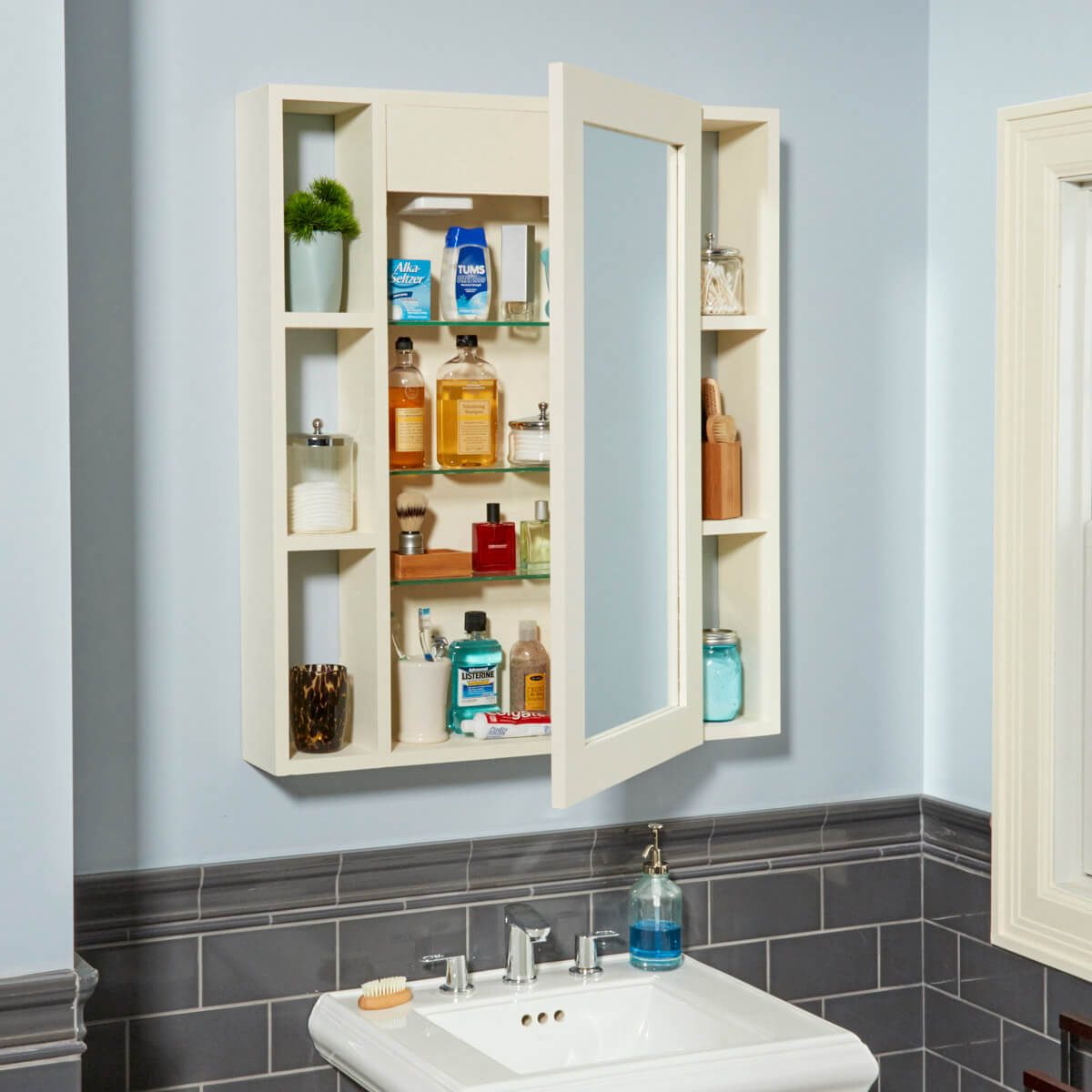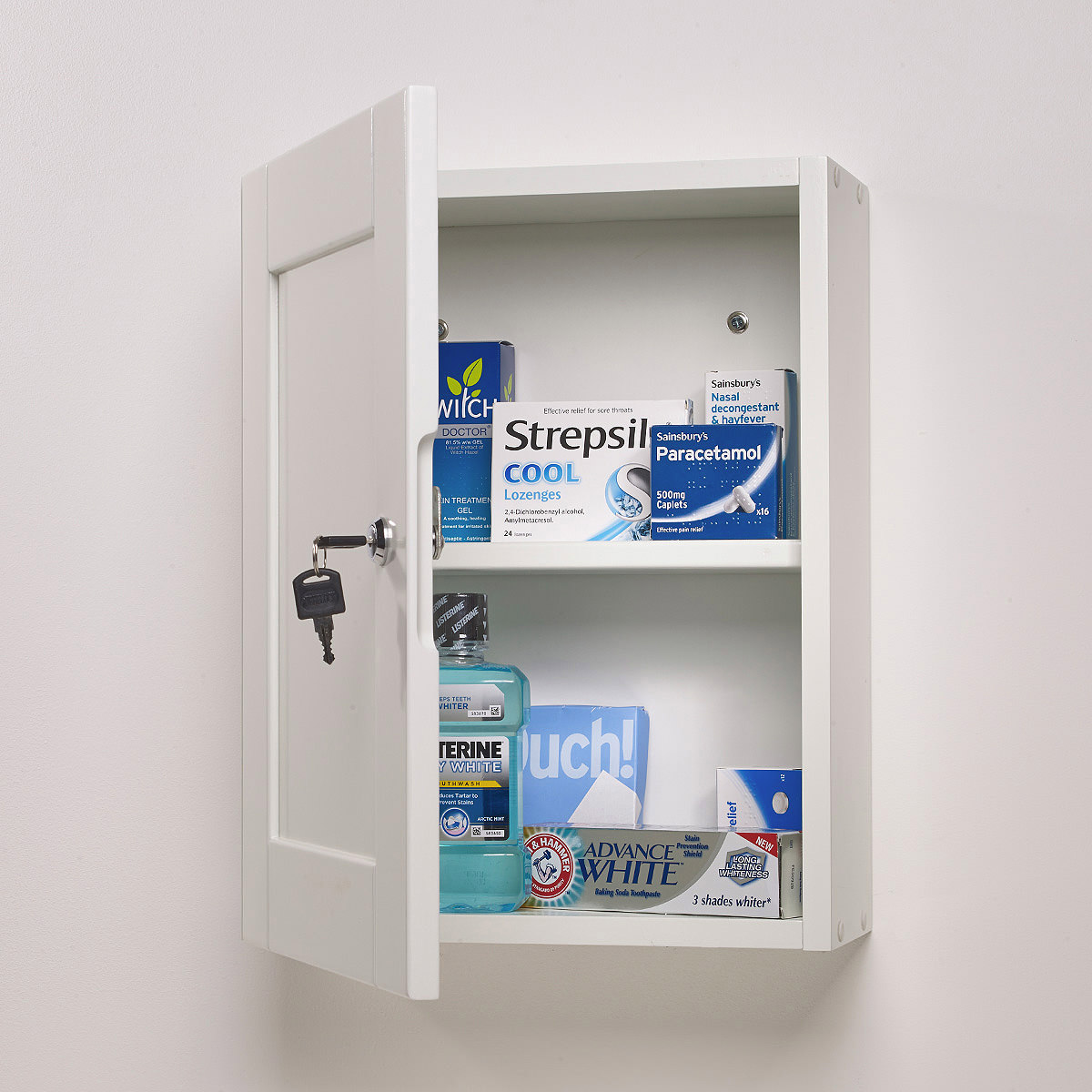RV Medicine Cabinet Essentials: Rv Medicine Cabinet Storage

Your RV is your home on wheels, and just like your home, it needs a well-stocked medicine cabinet. A well-organized medicine cabinet in your RV is essential for ensuring you have the right supplies on hand when you need them. This can be especially important when you’re miles away from the nearest pharmacy or medical clinic.
The Importance of a Dedicated Space
Storing medications in a dedicated, organized space in your RV is crucial for several reasons. First, it helps you keep track of what you have and prevents you from running out of essential medications. Second, it helps you find what you need quickly in an emergency. Third, it helps prevent medications from getting damaged or contaminated.
Essentials for Your RV Medicine Cabinet
It’s essential to have a basic first-aid kit and some common medications on hand in your RV. Here’s a list of essential medications and first-aid supplies:
- Pain relievers: Acetaminophen (Tylenol), ibuprofen (Advil), or naproxen (Aleve) can be used to treat headaches, muscle aches, and other minor pains. It’s important to note that aspirin should be avoided in children and teenagers as it can cause Reye’s syndrome.
- Antihistamines: Cetirizine (Zyrtec), loratadine (Claritin), or fexofenadine (Allegra) can help relieve allergy symptoms like sneezing, runny nose, and itchy eyes.
- Anti-diarrheal medications: Loperamide (Imodium) can help treat diarrhea. Remember to drink plenty of fluids to stay hydrated, especially if you have diarrhea.
- Antacids: Tums or Pepto-Bismol can help relieve heartburn and indigestion. These can also be used to treat upset stomach.
- Motion sickness medication: Meclizine (Bonine) or dimenhydrinate (Dramamine) can help prevent motion sickness. Take these medications about 30 minutes before you start traveling.
- Antibiotics: It’s a good idea to have a prescription for antibiotics on hand, in case you need them. Always talk to your doctor before taking antibiotics.
First-Aid Supplies
Along with medications, it’s also important to have a well-stocked first-aid kit in your RV. Here’s a list of essential first-aid supplies:
- Bandages: Assortment of sizes and types of bandages, including adhesive bandages, gauze pads, and butterfly bandages.
- Antiseptic wipes: Use these to clean minor wounds and cuts.
- Antibiotic ointment: Apply to minor wounds and cuts to prevent infection.
- Anti-inflammatory cream: Apply to sprains, strains, and other minor injuries to reduce inflammation and pain.
- Pain relief cream: Apply to muscle aches and pains to reduce discomfort.
- Tweezers: Use these to remove splinters, ticks, and other small objects.
- Scissors: Use these to cut bandages and other materials.
- Thermometer: Use this to check your temperature if you feel sick.
- First-aid manual: Keep a first-aid manual on hand to learn how to treat common injuries and illnesses.
Organizing Your RV Medicine Cabinet
To keep your RV medicine cabinet organized and efficient, consider the following:
- Separate Medications by Category: Organize medications by category, such as pain relievers, antihistamines, and antibiotics. This makes it easier to find what you need quickly.
- Use Storage Containers: Use small storage containers to separate medications and supplies. This can help prevent items from getting lost or mixed up.
- Label Everything: Label all containers and medications clearly. This is especially important for medications that look similar.
- Keep a List of Medications: Keep a list of all medications you are taking, including dosages and when you last refilled your prescriptions. This can be helpful in case of an emergency.
Tips for Selecting Medications
When selecting medications for your RV medicine cabinet, consider the following:
- Travel Needs: Think about your typical RV travel needs. For example, if you are prone to motion sickness, you may want to include motion sickness medication in your kit.
- Medical History: Consider your medical history and any allergies you have. It’s a good idea to have medications on hand for any chronic conditions you have.
- Expiration Dates: Check the expiration dates of all medications and supplies regularly. Discard any expired items.
RV Medicine Cabinet Storage Solutions

You’ve got your essential RV medicine cabinet items sorted, but now it’s time to tackle the real challenge: fitting it all in! Don’t worry, there’s a solution for every RV medicine cabinet situation, from the cramped to the spacious.
Types of RV Medicine Cabinets
The type of RV medicine cabinet you have significantly impacts your storage options. Let’s dive into the different types and their pros and cons.
- Over-the-Counter Medicine Cabinets: These are the most common type, typically found in smaller RVs. They’re often shallow and can be tricky to organize. The biggest benefit? They’re usually affordable and easy to install.
- Built-in Medicine Cabinets: These are integrated into the RV’s design, often found in larger RVs. They usually offer more space and are often more aesthetically pleasing. However, they can be more expensive and difficult to replace if they get damaged.
- Portable Medicine Cabinets: These are a great option for smaller RVs or if you’re looking for flexibility. They can be easily moved and stored when not in use. However, they may not offer as much storage space as other options.
Optimizing RV Medicine Cabinet Storage

You’ve got your RV medicine cabinet stocked with the essentials, but now it’s time to get organized. Imagine reaching for your allergy meds in the middle of a beautiful scenic drive, only to find yourself buried in a mountain of Band-Aids and sunscreen. Don’t let that happen! We’ll help you turn that medicine cabinet chaos into a well-organized haven.
Organizing and Maintaining Your RV Medicine Cabinet
A well-organized medicine cabinet is key to peace of mind on the road. It’s all about knowing where everything is when you need it. Here’s a checklist to help you conquer the clutter:
- Take Inventory: First things first, gather all your medications, first-aid supplies, and any other items you store in your cabinet. This will give you a clear picture of what you’re working with. You might even discover a forgotten tube of sunscreen from your last trip!
- Toss the Expired: Check expiration dates on all medications and first-aid supplies. It’s best to toss anything that’s past its prime. Remember, expired medications can be less effective, and even dangerous.
- Clean and Disinfect: Wipe down your medicine cabinet with a disinfectant solution. This will help prevent the spread of germs and keep things clean.
- Regularly Review: Make a habit of checking your medicine cabinet every few months to ensure everything is in its place and nothing is expired. This will help you stay on top of your supplies and avoid any surprises on the road.
Labeling and Categorizing for Easy Access
The secret to a well-organized medicine cabinet is clear and concise labeling. You don’t want to be digging through a jumbled mess when you’re feeling under the weather.
- Categorize by Use: Group medications and first-aid supplies based on their purpose. For example, you might have a section for pain relievers, another for allergy meds, and another for first-aid essentials.
- Use Clear Labels: Label containers and bottles clearly with their contents. Use permanent markers or adhesive labels for a durable solution.
- Consider Color Coding: If you’re feeling ambitious, try color coding your labels. This can make it even easier to find what you need quickly. For example, you could use blue for pain relievers, green for allergy meds, and red for first-aid essentials.
Utilizing Dividers, Trays, and Other Organizers, Rv medicine cabinet storage
Don’t let your medicine cabinet become a chaotic free-for-all. Dividers, trays, and other organizers can help create order and efficiency.
- Adjustable Shelves: Take advantage of adjustable shelves to create different levels for storage. This will help you maximize space and keep things organized.
- Dividers and Trays: Use dividers and trays to separate different categories of medications and first-aid supplies. This will keep things organized and prevent them from rolling around.
- Over-the-Door Organizers: If you’re short on space, consider using an over-the-door organizer to store additional supplies. These organizers can be hung on the inside of your cabinet door and provide extra storage without taking up valuable shelf space.
- Small Storage Boxes: Small storage boxes can be used to group together related items, such as bandages, gauze, and antiseptic wipes. This will help you keep things organized and easily accessible.
Optimizing RV medicine cabinet storage is a constant challenge, but the principles of organization apply across different spaces. Just like you’d want a sturdy, well-designed piece of furniture for your TV, a well-crafted medicine cabinet can enhance the functionality of your RV.
Consider the design of solid wood furniture TV cabinets for inspiration, as they often feature clever storage solutions and durable construction, traits that can be adapted to your RV’s medicine cabinet.
RV medicine cabinet storage can be a challenge, especially when you need to maximize space and ensure easy access to essential items. A good approach is to think about how you organize your kitchen at home, and the same principles apply.
You can create a sense of spaciousness and efficiency by using clear containers and labels, just like you might see in a kitchen with white kitchen cabinets with white countertops , which provide a clean and minimalist aesthetic. This approach helps keep your RV medicine cabinet organized and allows you to quickly find what you need, whether it’s a band-aid or your travel-sized toiletries.